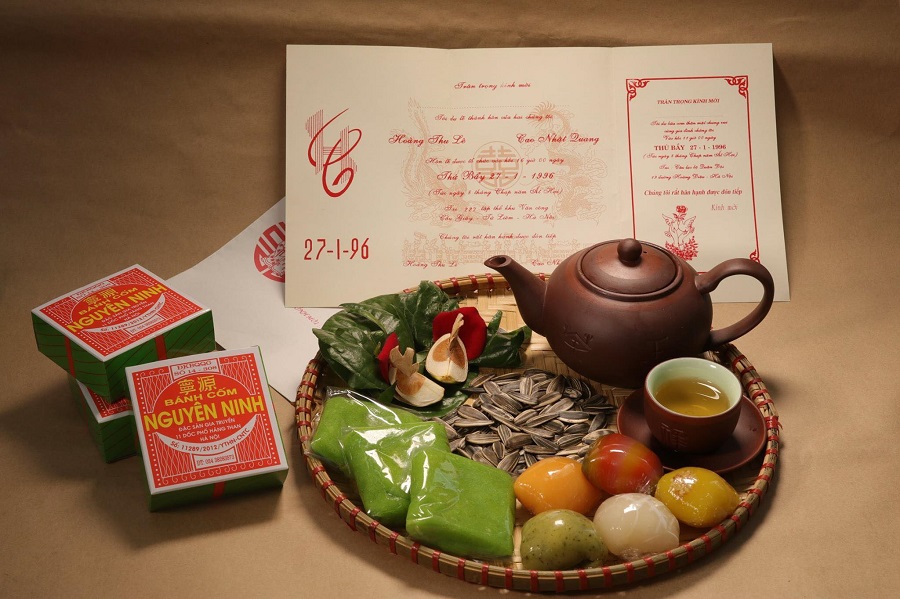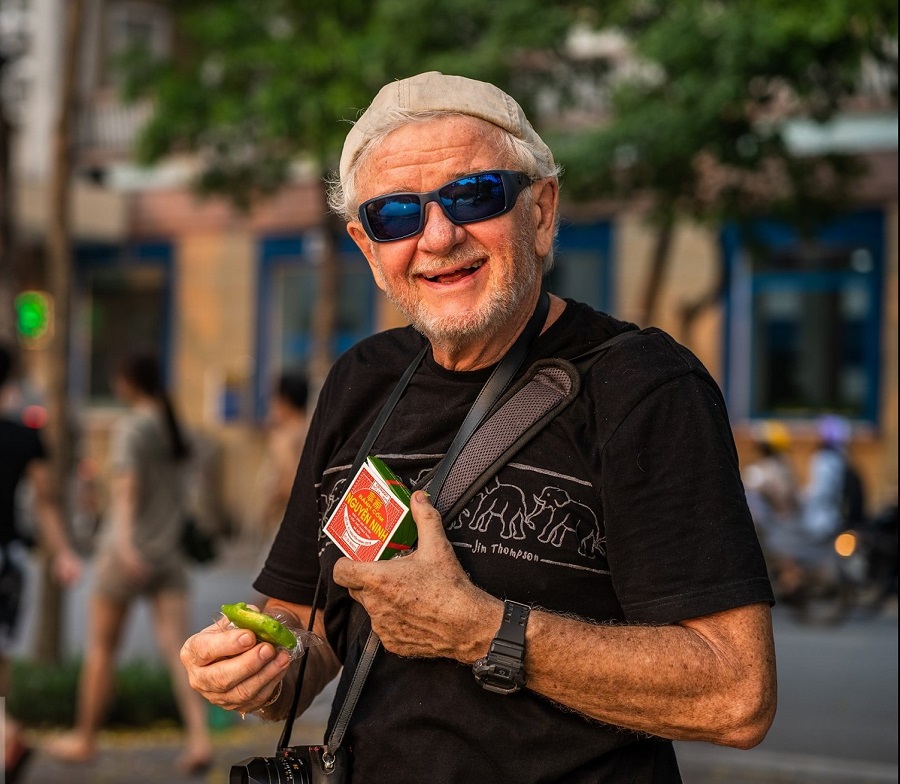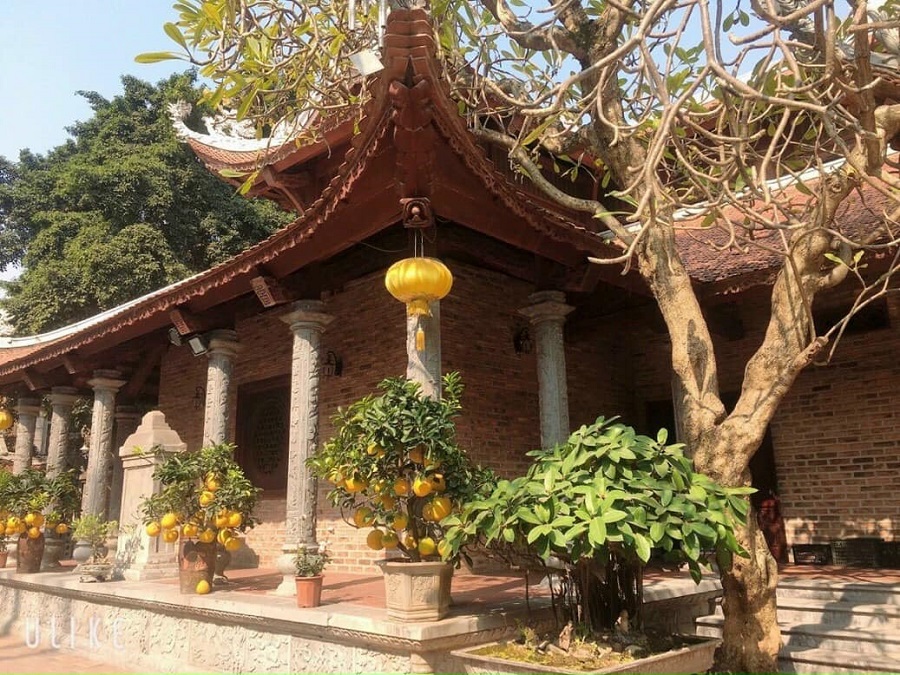Tales of Hanoi Streets: The lesser-known story of the street famous for Hanoi’s specialty
Not only a cultural and historical space, Hang Than Street is also home to most of Hanoi’s banh com or green sticky rice cake shops.
Hanoi is not only the capital of Vietnam. Moreover, it is home to magnificent cultural heritages and long-lasting customs and traditions, which have been crystallized over thousands of years by its inhabitants.
Tales of Hanoi Streets: The secrets unveiled
For thousands of years, Hanoians have been striving to preserve their unique cultural identity- a great combination of native culture and cultural exchange with China, the Asian region, and western countries.
| A favorite photo-taking destination of youngsters- the water tower at the intersection of Hang Than, Hang Dau, Hang Giay, Hang Cot, Quan Thanh, and Phan Dinh Phung streets in Hanoi. Photo: Linh Duong Dao |
If you’re a modern-day traveler who goes out of your way not to feel like a tourist, Hanoi is an exciting destination. The capital’s history and culture can be discovered bit by bit right in the old and bustling ancient streets.
The Hanoi Times would like to introduce a series of articles about Hanoi streets to provide detailed and exciting stories to our distinguished readers.
It could be a romantic path named after a talented musician or a road that crosses thousands of years old historical sediments buried underground. It might be the site of bloody battles, a burial place of many fallen combatants.
Let The Hanoi Times starts with the Hang Than Street of Ba Dinh District in Hanoi!
The lesser-known story of the street famous for Hanoi’s specialty
| The famous Banh com Nguyen Ninh bakery at No.11 Hang Than Street. Photo: Banh Com Nguyen Ninh |
Hang Than Street stretches around 400 meters from Yen Phu Street to Hang Dau - Quan Thanh Water Tower, crossing Pham Hong Thai and Hoe Nhai streets.
Back in the day, with some households selling charcoal, the street was called ‘Hang Than’- which means ‘coal shop.’
Under French colonial rule, it was renamed ‘Rue du Charbon’ or ‘Coal Street.’ The original Vietnamese name was restored in 1945 and has remained ever since.
Built by the French in the late 19th century, the water tower sits in the middle of the roundabout at the intersection of Hang Than, Hang Dau, Hang Giay, Hang Cot, Quan Thanh, and Phan Dinh Phung streets. It is said that under that tower was once a gunpowder storehouse.
The birthplace of Hanoi’s famous cake
In the 1860s, the owner of the house at No. 11 Hang Than Street introduced the banh com, or young sticky rice paste with mung bean fillings, and branded it ‘Nguyen Ninh,’ pioneering the trade of the whole neighborhood.
Up to now, through ups and downs, the Hang Than-branded banh com has become not only a unique snack of the capital but also a memento of the past to many generations of Hanoians.
Walking down Hang Than Street, passersby are easily attracted by the dozens of eye-catching banh com varieties arranged by color for sale at stalls. At first, there were only a few banh com -making households, compared to the more than 50 shops along the street today, with such names as Nguyen Ninh, An Ninh, or Khang Ninh, ‘Ninh’ is a Sino-Vietnamese word meaning ‘tranquil’.
| Banh com, banh phu the, tea, and roasted sunflower seeds are indispensable at Hanoian's wedding party. Photo: Ha Thanh |
The freshly made cakes were once wrapped in banana leaves. The leaves are replaced by the glossy plastic wrappers and square cardboard boxes. Inside the wrapper is the green color of com or green sticky rice coating. The filling contains light yellow lotus seeds, mung bean pastes, and white coconut shreds. All the ingredients bring the autumn breeze from paddy fields to the bustling city.
The square, green sticky rice cake symbolizes a comfortable and happy life. Originating from a corner of the Old Quarter, banh com has become a long-standing cultural feature of Hanoians, which is indispensable in weddings and death anniversaries and a popular gift among tourists.
For the residents of Hang Than Street, making banh com is not merely business but also their way to preserve the sweet flavor and fragrance created centuries ago.
Besides banh com, the shops on Hang Than Street also sell other traditional cakes such as banh dau xanh or mung bean cake, banh phu the or husband-and-wife cake or oan, the truncated-cone-shaped cake.
And apart from cakes, this street is also notorious for rice vermicelli with grilled pork, rice vermicelli with fried tofu and jellyfish, rolled rice pancake, sweet dessert soups, caramel, coconut ice cream, and snail, among others.
Satisfy not only the taste bud but also the visual and knowledge
| A foreign traveler tries Banh com. Photo: Banh Com Nguyen Ninh |
Visitors come to Hang Than Street, located in the sightseeing center of Hanoi, not only to enjoy the specialties here but also to immerse themselves in the landscape and the unique character of Hanoi in the small old street.
Nowadays, Hang Than Street still has many houses with ancient architecture: yellow walls, small windows, and mossy tiled roofs - reminiscent of the architectural excellence of the twentieth century.
In particular, house No. 40 Hang Than is associated with the romantic youth of two famous poets: Xuan Dieu and Huy Can. They lived in the attic for more than a year from the fall of 1939 before Xuan Dieu went to My Tho to work as an official.
Hanoi is famous for its numerous temples, pagodas, and streets like Hang Than. One of the religious buildings here is Tu Vi Temple or the Four Deities Temple, dedicated to the Four Red Ladies - the four legendary royal concubines who became protectors of sailors after their deaths at sea.
| The hundred-year-old Hoe Nhai Pagoda is located at No.19 Hang Than Street. Photo: Hang Ha |
There are also three buildings devoted to Uy Linh Lang, allegedly King Ly Thanh Tong’s son who defeated the Chinese Song invaders. These are the upper Thach Khoi Communal House, lower Thach Khoi Communal House, and Giai Canh Temple. Moreover, in the middle of the street lie two relics of the old Yen Thuan Village: the upper Yen Thuan Temple at No. 25 and the lower Yen Thuan Temple at No.39 of the street.
However, the best-known relic of Hang Than Street is the Hoe Nhai Pagoda, which is very important for its religious values and role in the nation's history. The pagoda has undergone many restorations, with an area of about 3,000 square meters but still retains numerous ancient artifacts, especially 28 stelae. including one that proves the neighborhood is a historic landmark: Dong Bo Dau Wharf.
In those early winter days, the unique atmosphere of Hanoi’s autumn is still lingering. So, what could be better than strolling around Hang Than Street to savor the nostalgic atmosphere and the iconic banh com here?


.jpg)













